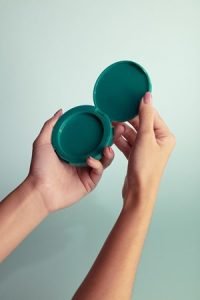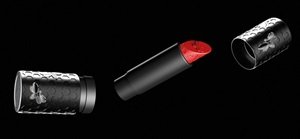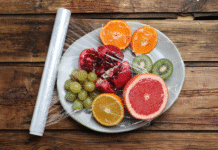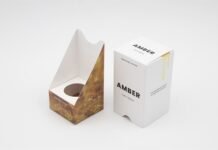Small in comparison to major Asian fairs, the recent Luxepack Monaco remains a place to be for the luxury packaging sector. With 10,000 visitors from 95 countries, the show experienced a record footfall since its founding 35 years ago. A significant increase in visitors from the UK was noticeable, logical for an immersive and unique event that unveils trends and innovations across an entire industry.
In line with the times, the show mirrored the luxury packaging industry’s efforts to transition to a sustainable transformation, without compromising the consumer experience. With environmental impact as a must, the solutions showcased focused on the search for materials and solutions to make perfumes and cosmetics packaging enter the circular economy. Recycled and bio-sourced materials, the development of mono-material packaging solutions and intelligent packaging were the main areas of packaging innovation in virtually all segments. Several Asian companies were also in the spotlight.
Materials
Manufactured by Dow, Surlyn is an ionomer used for perfumes and cosmetics jars and caps. Two sustainable versions of its flagship material were launched in Monaco. While Surlyn Ren is made from biowaste such as used cooking oil, Surlyn Cir is composed of mixed plastic waste. Since January this year, Dow and LVMH Beauty have collaborated to accelerate the use of sustainable packaging across LVMH’s perfume and cosmetic products. This collaboration has enabled both bio-based and circular plastics to be integrated into several of the beauty multinational’s product applications without compromising functionality or quality of the packaging. The LVMH Beauty division will be one of the first beauty brands to use the new Surlyn for its 75 brands.

Also in the spotlight was US-based materials company Eastman. It partners with service provider International Cosmetic Suppliers for recycled PET, tapping into the high demand for refillable and monomaterial make-up packaging. The packaging demonstrated was a refillable make-up compact using Eastman’s Cristal One Renew-100. This is a PET with 100% certified recycled content obtained via molecular recycling. The removable pan is fitted with a PET hinge – fully extending the compact cover enables the base insert to pop out so the compact can be refilled.
According to Eastman, using PET for the hinge rather than metal pins reduces the number of materials used and streamlines production as these components are made by a subcontractor and shipped to the assembly site. With this fully PET compact, which is also glue-free, molding and assembly is done in one production unit. Cristal One Renew-100 is said to offer the same color and processing as virgin PET, with a 20%-30% reduction in greenhouse gas emissions compared to virgin fossil feedstocks. The co-polyester is also suitable for molding thick-walled transparent containers or parts with a thickness up to 9mm.
The German Heinz Glass is giving its glass a slimming treatment with its just launched glass-hardening process designed to lightweight perfume and cosmetics bottles. Named and patented, the ‘Resisdance’ process makes glass bottles more resistant through a simple surface treatment. According to the company, the mechanical strength of the glass is doubled on average, with better protection against scratches and impacts, but above all the possibility of lightening the glass walls.
The best hardening results are obtained on glass with a thickness of less than 4 mm. However, this value varies according to factors such as the container shape and glass distribution. Resisdance opens up new prospects, as a lighter bottle is also generally more fragile. In particular, this technique opens up new prospects in the eCommerce market, where the weight of products transported has a direct impact on CO2 emissions. The technology does not prevent the glass from being decorated and, above all, does not affect its recyclability. Heinz Glass has invested in a pilot line to promote the new technology.

Thanks to the possibility of infinite recycling in well-established flows, aluminum can be envisaged in different forms via single-material and/or refillable designs. INCA Packaging, an Italian specialist in aluminum and plastic packaging, is responding to this growing demand with a significant investment in process improvements with new water treatment systems, high reduction in energy consumption and in chemicals, with an 80% increase in capacity. But at the show, INCA was demonstrating its ability to design products using recycled aluminum (RE-AL), and the development of single-material or refillable solutions.
It showed a cap for a flacon of perfume without a plastic insert, a lid for a jar of cream designed entirely in aluminum, with the use of virgin aluminum for the exterior and recycled aluminum for the interior, in percentages between 50% and 75%. In addition, the INCA team is working on a 100% recyclable aluminum refill system for cream pots, as well as replacing zamak weights with an aluminum version.
Innovative packaging solutions

Another highlight of the show was the Aptar Beauty and Pinard Beauty Pack collaboration on the Future Airless PET packaging. Historically a specialist in ‘airless’ bottles and dosing systems, Lablabo was acquired in August 2019 by Pinard Beauty Pack group together with its patented technology. The result is fully mature Future Airless PET composed of a double PET layer – the outside made of a rigid PET pack with a PET pouch inside.
The pouch bears the airless system and without air contact, the formula stays protected with a high restitution rate. The pump can be used at 360°. The use of transparent PET allows a premium look, while the full pack is eCommerce friendly, having passed the rigorous Amazon ISTA-6 protocol. The full commercial launch is planned for Q2 2024.
Australian company Varden’s Paperseal brand is moving beyond food to focus on the cosmetics market with its thermoformed refills made from agricultural by-products. While refills are not new in cosmetics, many are made using plastic. The Australia-based company offers a rigid refill made of agricultural by-products. Sugar cane refills were on display but bamboo, rice straw and wheat straw can all be used. The waste material undergoes a refining process to standardize the fibers, and is then thermoformed. A 10-micron thick biopolymer barrier coating developed in-house is applied to the inside of the refill cup. Paperseal says that the refill offers, the same shelf-life and performance as plastic, while being biodegradable, home and industrially compostable and recyclable in the paper stream.
Among the two permanent gift sets in the LVMH group catalog, is the Veuve Cliquot Ice Jacket developed in the 2000s. To keep the champagne cool, an isothermal insulation was created. Inspired by diving suits, the jacket was initially done in neoprene, a petroleum-based material. To limit the carbon footprint of the manufacturing process, part of LVMH’s regenerative luxury project Maison/0 set up a collaboration with the Central Saint Martin’s College of Art and Design in the UK. The objective was to create a product made with 100% recycled plastic using 3D knitting technology. The redesigned Ice Jacket, already on the market for the past few months emits 96% less carbon than its predecessor.
Smart packaging on the agenda
Silicon Craft Technology, a Thai public company offers value added solutions for luxury brands with RFID microchip technologies – NFC for authentication, including a smart microchip capable of tamper detection. The SIC43NT, combines two vital features of tamper detection to verify whether the packaging has been opened and proof of authenticity to ensure the product is genuine.
This can help consumers avoid purchasing fake or expired products, and is ready to be adapted for packaging such as wine bottles, cosmetic boxes, or skincare boxes. The SIC43S1 is a smart microchip where information is encrypted, therefore preventing others from copying or stealing it. Additionally, it can also authenticate the product to ensure it is from the original source, helping to protect both privacy and security. The technology can be applied to various products, such as necklace accessories and luxury handbags
And finally, Make a Mark confirms its excellence
Twenty bespoke packaging design projects were showcased for the third edition of Make a Mark presented at Luxepack. Initiated during the pandemic by the CEOs of Avery Dennison, Estal and Kurz, this initiative continues to shake up the industry. The incubator for high-end design innovation brought together leading agencies across the world specialized in packaging design. They were invited to develop concepts around three axes: sustainability, luxury and innovation. The designers were invited to give free rein to their imaginations, using new materials to reinvent packaging in the Wine & Spirits, Beauty & Fragrance and Delicatessen categories. These design concepts gave rise to prototypes using ESTAL glass, Avery Dennison label materials and KURZ Group printing and embellishment tools.

Jan Garcia, commercial director at Estal.
Indian agency Firstbase, developed the concept of Kaâl. This is human’s relentless drive to make a lasting impact and transcend the limitations of time, to create something greater than ourselves, something that endures beyond eternity. In its quest to craft an unparalleled creation, Firstbase sought to capture the essence of the most precious element of all – time. Its creation Kaāl, after the Hindi word for time, is a celebration of its fleeting yet invaluable nature. The pack is crafted in crystal and shaped like an hourglass representing the essence of time, it exudes an aura of luxury and sophistication. The artful metal pillars enveloping the beautifully diamond cut crystal bottle serve as a striking representation of the past, present, and future, reflecting the importance of history, the significance of the present, and the possibilities of the future. It is crowned with an ancient Indian Sun dial, a symbol of the passage of time that adds a touch of regality and elegance to the overall design. Hot stamping with H+M tools, micro embossing and direct glass foil transfer were used, the printer is Italian Sefra.
Thai agency, Farmgroup, sought a representation of its country that embodied fun, challenge, and the ability to redefine a common object unique to its nation. It found the symbol of the durian, known as the King of Fruit. The distinctively strong odor of the fruit sets it apart as well as its high maintenance – you either love or hate it.
The contradictory concept was the main idea in creating the LoveHate durian milk packaging. The spiky exterior looks dangerous, while the light cardboard protective layers around the vulnerable bottle shows how love and hate can coexist. The techniques used are offset printing, hot stamping, die-cutting and blind embossing from H+M tools and the printer is German Volherbst.











